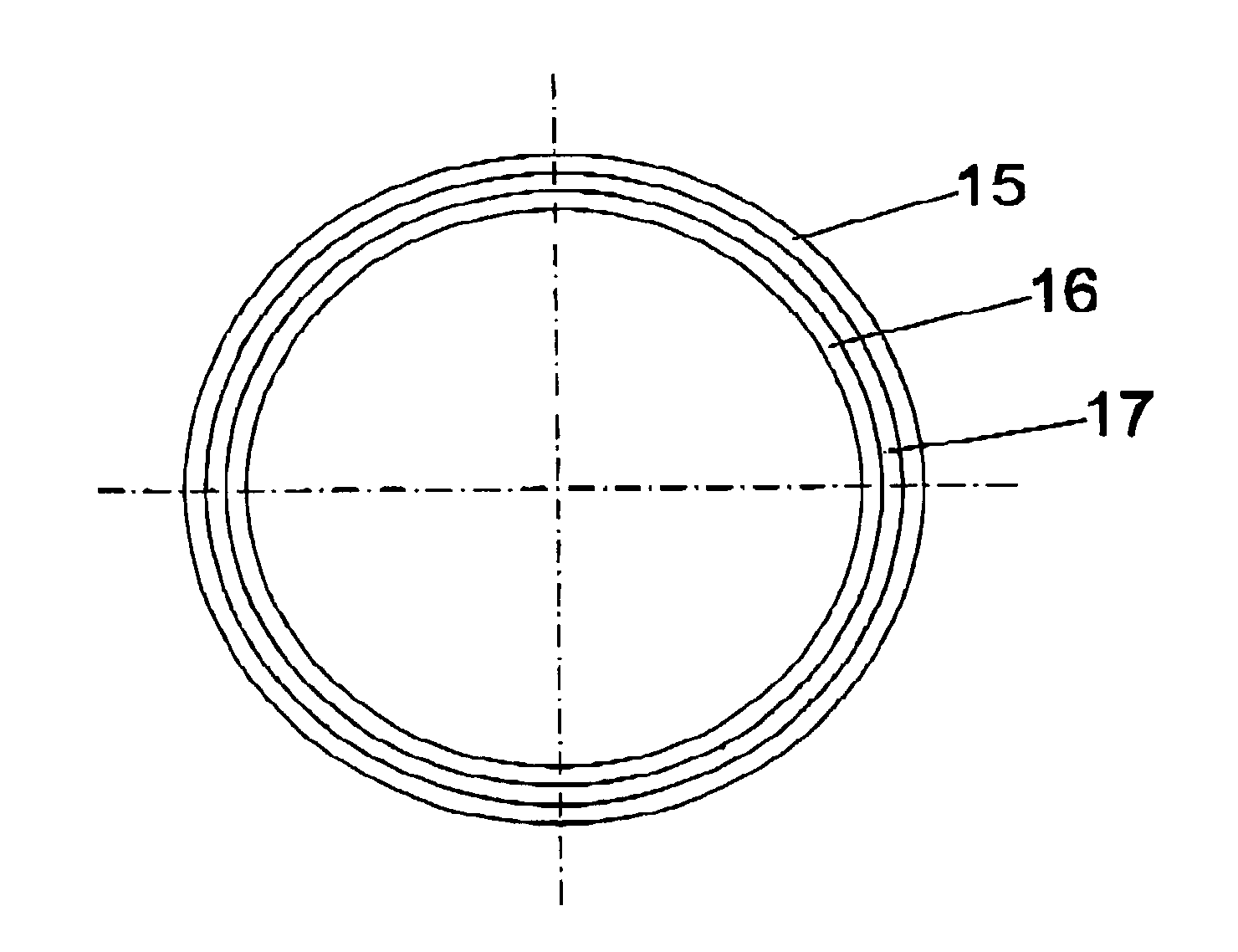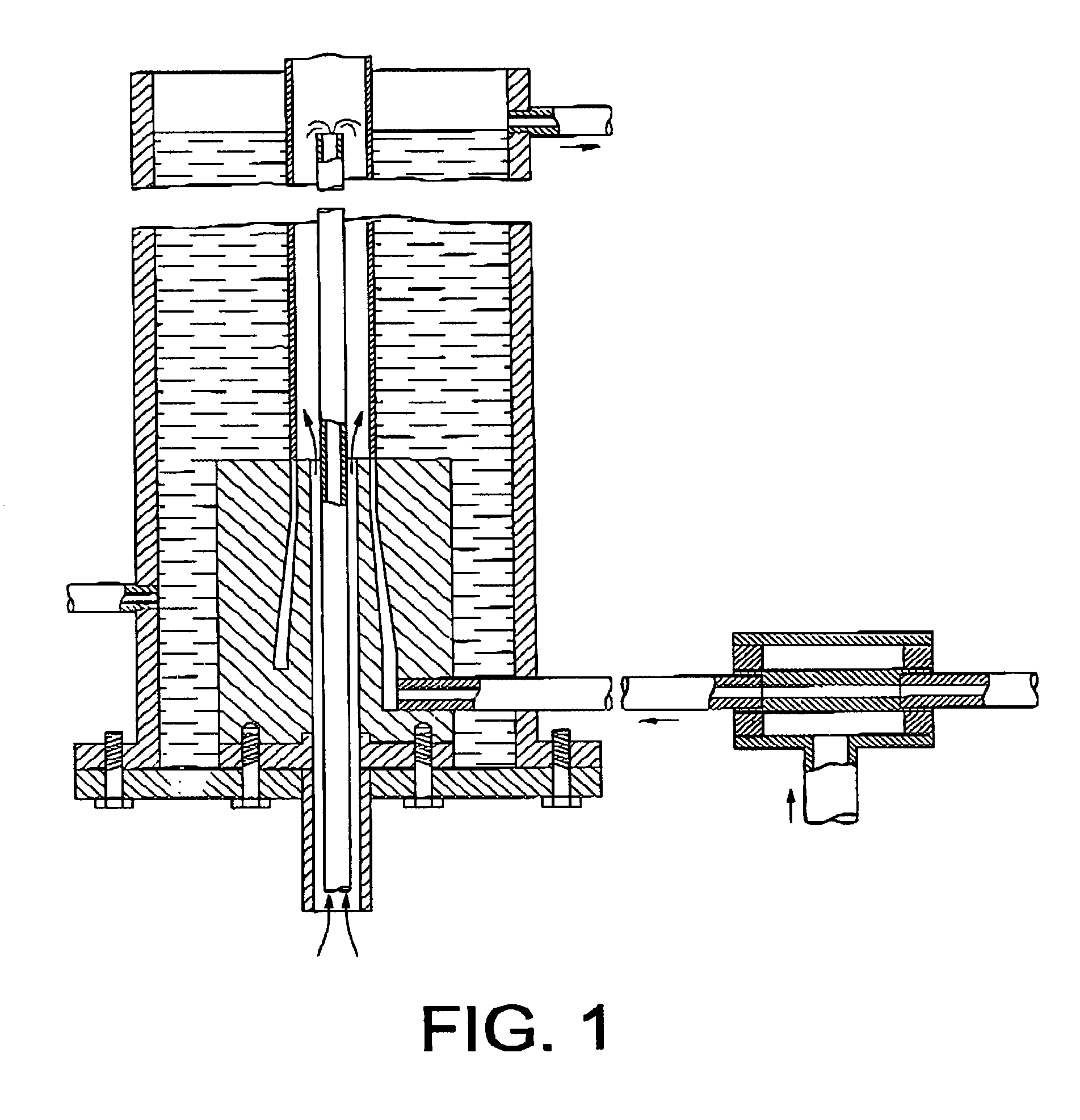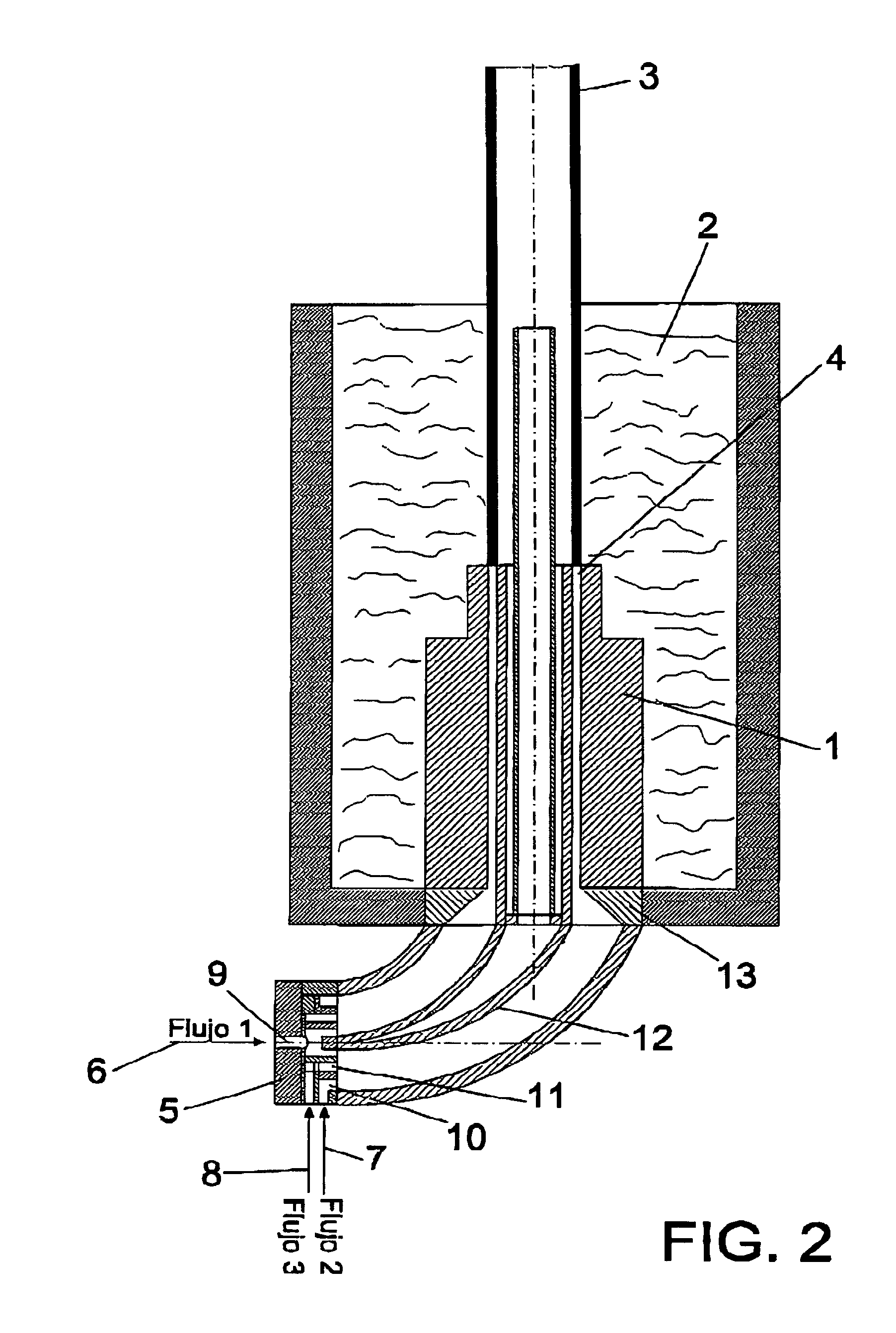Multilayered cellulose casing, method of manufacture thereof and extrusion head for obtaining said casing
a technology of cellulose casing and cellulose fiber, which is applied in the field of multi-layered cellulose casing, method of manufacture thereof, and extrusion head for obtaining said casing, which can solve the problems of unrecognized shirring operation, inability to use smooth casing by sausage manufacturers, and inability to shirring operations, so as to reduce the proportion of colored casing mass, reduce negative environmental impact, and reduce the volume of residues generated
- Summary
- Abstract
- Description
- Claims
- Application Information
AI Technical Summary
Benefits of technology
Problems solved by technology
Method used
Image
Examples
example 1
[0073]In a production process such as described in the invention and shown in FIGS. 2 or 3 are introduced three viscose flows, through an extrusion head as described above. The viscose used to form the internal layer, that which is not in contact with the outside, is colored by mixing pigment and viscose by conventional means. The pigment used in its manufacture is the blue pigment generically known as Pigment Blue 15:3 with the chemical component Cu-phtalocyanine (beta) manufactured by the firm CIBA under the brand name “Azul 4GNP”®.
[0074]In addition a conventional extrusion is performed using an extrusion head of the type shown in FIG. 1 or the like, which is used as a control casing. The pigment used in its manufacture is the blue pigment generically known as Pigment Blue 15:3 with the chemical component Cu-phtalocyanine (beta) manufactured by the firm CIBA under the brand name “Azul 4GNP”®, mixed in a manner known to an expert in the field prior to extrusion. In this case all of...
example 2
[0084]In a production process such as the one shown in FIGS. 2 and 3 were introduced through an extrusion head three flows of viscose. The viscose used for the internal layer, which will not be in contact with the outside, was colored mixing the pigment and the viscose by conventional means. In its manufacture was used the blue pigment with the generic name Pigment Blue 15:3 with chemical composition Cu-phtalocyanine (beta) manufactured by the firm CIBA under the brand name “Azul 4GNP”®.
[0085]Additionally, a conventional extrusion was performed using an extrusion head as shown in FIG. 1 or the like, which was used as a control casing. In its manufacture was used the blue pigment with the generic name Pigment Blue 15:3 with chemical composition Cu-phtalocyanine (beta) manufactured by the firm CIBA under the brand name “Azul 4GNP”®, mixed in the manner known to the expert in the art prior to extrusion. In this case the entire amount of viscose was mixed with the pigment prior to extru...
example 3
[0092]100,000 meters of caliber 22 EUR were taken of each type of casing manufactured according to the previous example and shirred in conventional machines with a stick length of 110 feet.
[0093]It was observed that when the control casing was shirred the shirring rollers were pigmented and stained noticeably by the casing pigment after about 10,000 meters of shirring.
[0094]It was found that this pigmentation and staining was not deposited on the shirring rollers in casings A to E, both inclusive, of the above example after shirring over 100,000 meters of casing.
PUM
 Login to View More
Login to View More Abstract
Description
Claims
Application Information
 Login to View More
Login to View More - R&D
- Intellectual Property
- Life Sciences
- Materials
- Tech Scout
- Unparalleled Data Quality
- Higher Quality Content
- 60% Fewer Hallucinations
Browse by: Latest US Patents, China's latest patents, Technical Efficacy Thesaurus, Application Domain, Technology Topic, Popular Technical Reports.
© 2025 PatSnap. All rights reserved.Legal|Privacy policy|Modern Slavery Act Transparency Statement|Sitemap|About US| Contact US: help@patsnap.com



